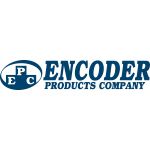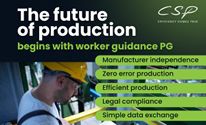Hatz Engines - Case Study from CSP US Inc.
Before the introduction of CSP software, there was no integrated control of workflows, and the potential for process optimization remained untapped. Production relied on manual coordination, which led to efficiency losses and unnecessary error rates.
Mastering Manufacturing Excellence With a Quality Management System
Let's discuss what a QMS is, explore its core components and objectives, examine key industry standards like ISO 9001, AS9102, and ISO 13485, guide you through the implementation process and demonstrate how digital tools can enhance your QMS effectiveness.
Benefits and Applications of IO-Link Wireless in the Food Industry
With IO-Link Wireless, food manufacturers and distributors can optimize their processes and stay ahead of the competition. The CoreTigo team provides a comprehensive look at how this works in a real factory setting.
How to Ensure Your Corrective Actions Work, and Keep Working
Implementing corrective actions that are truly sustainable is a constant challenge. There always seem to be variables you didn't anticipate: A new person executing a process. An important piece of information unexpectedly unavailable. A gap in reporting.
Optimizing Your IT Ecosystem: Is It Time for a Tech Stack Audit?
A tech audit can serve as a diagnostic tool, flagging vulnerabilities within your packaging company's IT infrastructure before they impact the health of your business.
Driving Quality Control Excellence with MOM Integration
With MOM integration, compliance with regulatory standards becomes more manageable. Automated data collection and reporting streamline the process of preparing for audits and maintaining certification requirements.
ISO 9001: What's in it for you?
The decision to implement ISO 9001 is a business decision; and like all business decisions, you have to weigh the costs against the benefits. Also, you can implement ISO 9001 internally and stop there, or you can push ahead to seek certification.
Error-Proofing: The Key to Modern Manufacturing Success
For manufacturing engineers, a large part of the job is managing and eliminating risks. This process is called error-proofing, or poka-yoke in the industry.
In-Line Seal Strength Testing Using Thermal Cameras
In the realm of manufacturing precision, the assurance of product packaging integrity takes center stage. Using thermal cameras for in-line seal strength testing has revolutionized quality control and efficiency in the packaging industry.
Why Automated Optical Inspection Is a Winner in PCB Quality Control
Excelling in PCB quality control is a meaningful way to maintain competitiveness despite these conditions. Many decision-makers have increasingly invested in automated optical inspection (AOI) at their facilities. This approach leads to numerous benefits.
Why the Conventional Deep Learning Model is Broken
The conventional deep learning model is a supervised model. It takes months of time to develop and train the model before it is ready for the production line. Here, Karina Odinaev explains why the conventional deep learning model is broken and what the alternatives are.
Why training with few good images is fake news
As recently as five years ago, the only way to teach a machine vision system what a good product looked like was to laboriously show it every possible fault, mark and annotate the errors and catalogue them.
Unleashing the Potential: Quality Validation in Additive Manufacturing
As the adoption of AM grows across sectors ranging from aerospace to medical devices, one critical challenge remains: ensuring the quality and reliability of 3D printed components.
Why Visual AI Inspection Is Essential for Detecting PCB Defects
Artificial intelligence (AI) can help manufacturers handle quality control while managing larger volumes. Here are some compelling reasons people use visual inspection AI tools in modern production facilities.
The Monetary Impact of Quality and Quality Management
Quality is not something that you can add into your product in the last step of your process. Quality is the outcome of all your processes and efforts.
Records 1 to 15 of 15
Featured Product

MRPeasy - ERP for Small Manufacturers That Delivers Results
Always know what you have in stock and what you'll need to fulfill orders. Never forget to order parts on time or fail to notice a late delivery from your vendor. Easily create manufacturing orders and schedule them automatically according to resource availability or delivery deadline. Generate accurate cost and lead time estimates and provide customers with quick quotes. Receive notifications when orders are late or inventory levels reach a critical point. Ensure seamless communication between sales, production, warehousing, procurement, administration, and finance. Integrate with popular accounting, CRM, and e-commerce apps. MRPeasy is an ERP software for small manufacturers that gives you all that and more. Our users report a 54% average improvement in the overall performance of their business and a 42% increase in on-time deliveries. Try for free, no credit card needed.
Manufacturing and Automation - Featured Company

Encoder Products Company
At Encoder Products Company, we specialize in the encoders that provide you with motion feedback. EPC has been a leading designer and manufacturer of motion sensing devices for more than 50 years, we understand that each industrial automation application is different, and you need encoders that fit the needs of your applications. Our encoders are highly configurable, offer an array of shaft or bore sizes, output types, connector types, mounting options, and resolutions as high as 65,536 CPR.





.jpg)

.jpg)
.jpg)

.jpg)



.jpg)
